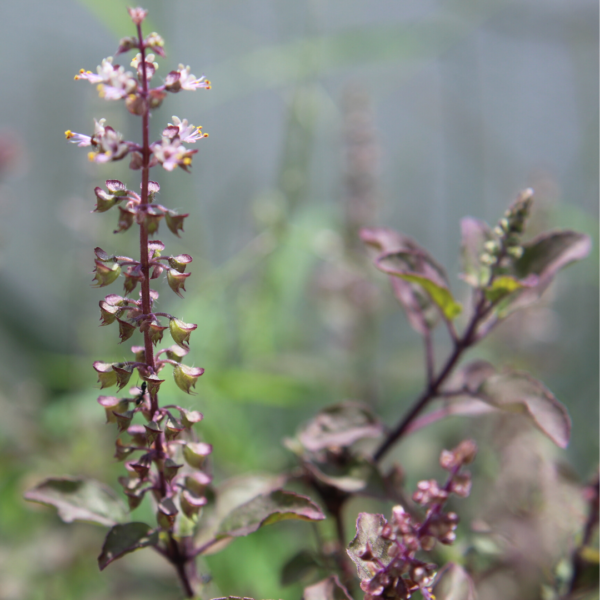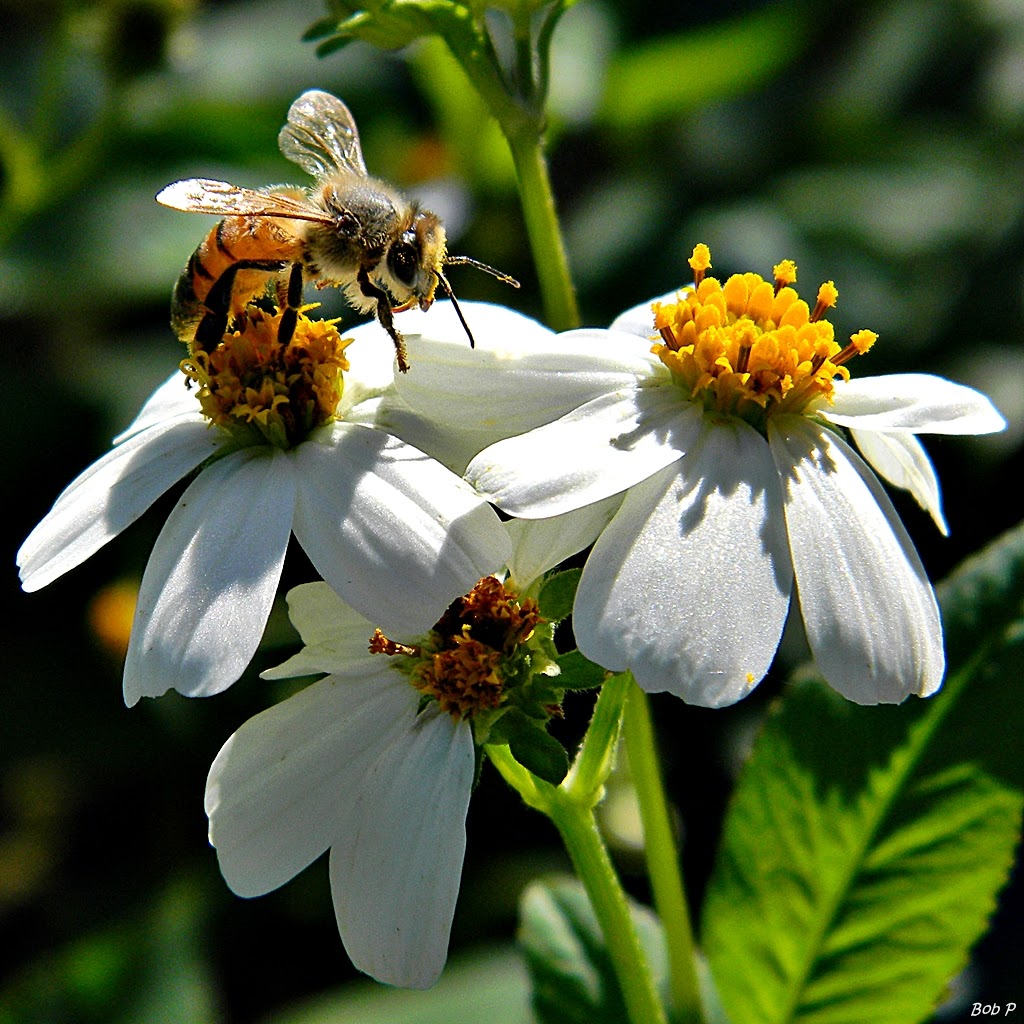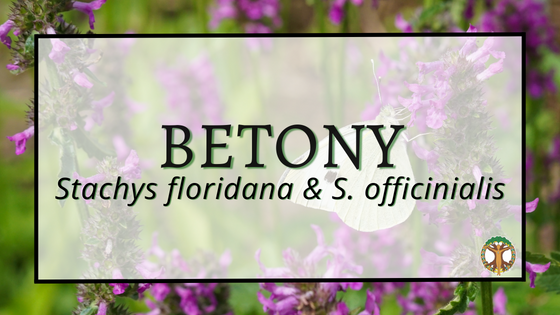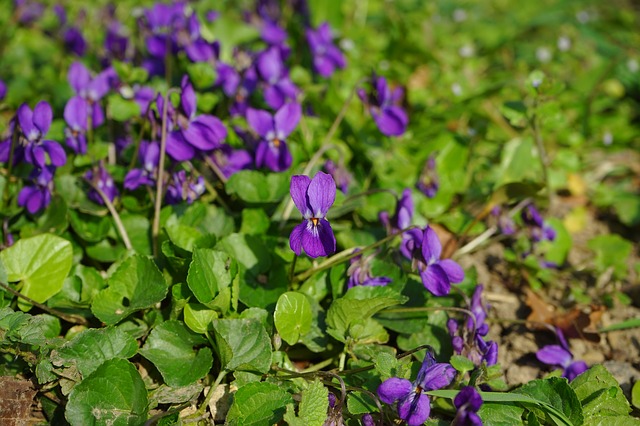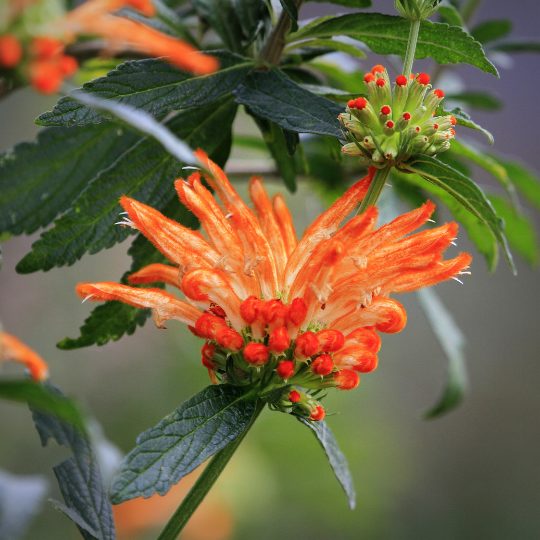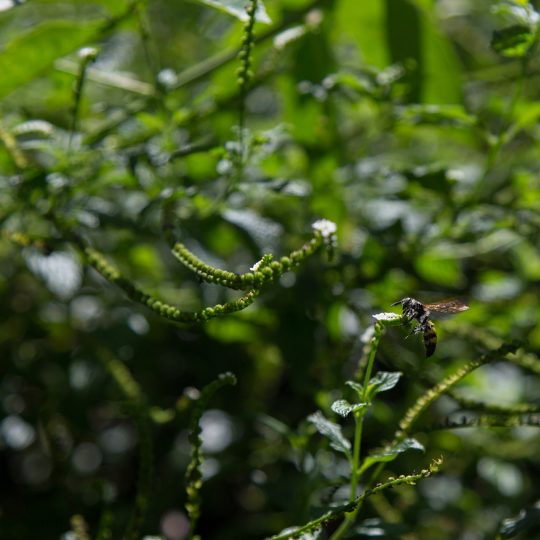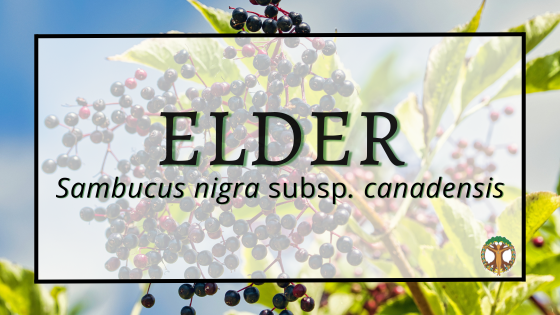-
Tulsi
June: Tulsi, Holy Basil Latin name: Ocimum gratissimum, O. tenuiflorum (previously O. sanctum), and O. africanum Family: Lamiaceae Common name: Tulsi, holy basil, sacred basil Tropical tulsi: Vana (O. gratissimum), Krishna (O. tenuiflorum) Rama (O. tenuiflorum), African basil (O. gratissimum), clove basil (O. gratissimum) Temperate tulsi: (O. africanum) Usage: Within the Ocimum genus there are about 60 different species, all of which are relatives of the common culinary sweet basil (Ocimum basilicum). There are two species of holy basil within the Ocimum genus, O. sanctum and O. gratissimum. Medicinally the two species can be used relatively interchangeably. Here in Florida we see Ocimum gratissimum, or Vana Tulsi, thriving year round.…
-
Spanish needles
Latin name: Bidens alba – AsteraceaeCommon name: Spanish needle, beggarticks, shepherd’s needle, butterfly needle, pitchfork weed, ottrancedi, xian feng cao, gui zhen cao Uses: There are approximately 250 species within the genus Bidens. All occur within tropical and warm, temperate climates — roughly 7-8 of which grow in Florida. All-star of the genus — Bidens alba — is one of our greatest Central Florida plant allies. We use the plant’s aerial parts, but the plant’s older leaves contain saponins and are unpleasant in taste and for the tummy. Therefore, the plant’s young tender leaves are ideal for medicinal and nutritional uses. The list of actions for B. alba is vast. Stephen Buhner provides a quick list of…
-
Betony
Latin name: Stachys floridana – Lamiaceae (Mint Family) Common name: Florida betony, wild radish, rattlesnake weed, Florida hedgenettle Usage: The tubers of S. floridana are used as food and have a crisp, sweet taste. They can be eaten raw in salads and also make a stellar pickle. Harvest the tubers from late winter until spring. If the season has been dry, the tubers may not be as abundant. Once the weather heats up the tubers die back and become soft and brown. S. floridana is a relative of Stachys affinis, or crosnes, whose tuber is sold and utilized as a gourmet food. The leaves and flowers are used in a…
-
Violet
March – Violet Latin name: Viola odorata, Viola affinis, Viola sororia, Viola tricolor, (and related species) – Family: Violaceae Common name: Violet, sweet violet, common blue violet, common wood violet, heartsease Usage: There are anywhere between 525 to 600 species within the Viola genus. Identification of species can be challenging, but according to many sources this is not of great importance, so long as you are positive on the genus – Viola. This beloved garden plant not only delights us with the beautiful purple flowers of its namesake, but also offers us sweet, cooling, anti-inflammatory medicine. The leaf and flower are both utilized for cooling hot…
-
Spearmint
Latin name: Mentha spicata (aka M. viridis or M. sativa) Family: Lamiaceae Common name: Spearmint, garden mint Usage: There are hundreds of varieties of cultivars within the mint family, many of which are used for their pleasant taste and medicinal value. One such variety is spearmint; utilized for its stimulant, carminative, antimicrobial and antispasmodic properties, with a long history of use in soothing digestive upset (nausea, gas, bloating). Steven Foster states, “Spearmint…has a much longer history of medicinal use than peppermint. It was so commonly grown and used that it was rarely described in herbals; it is known to have been cultivated in every convent garden in Europe by the…
-
Dagga
Latin name: Leonotis nepetifolia Family: LamiaceaeCommon names: Dagga, Klip dagga, Lion’s ear, Shandilay Growth: Erect, loosely branched annual that can get 8 ft tall. The stems are starkly square and leaves are smooth, with toothed margins, and oppositely arranged. The flowers are inside ball like clusters, 2-4 in, circling the stem. “The tubular flowers that peek out of the spiny heads are orange and furry, like a lion’s ear, so they say.” (1) Native to subtropical Africa, Leonotis does very well in our Central Florida climate*. It has a sister, Leonotis leonurus, that looks very similar and is also heavily planted in Central Florida gardens. L. leonurus has much fuller…
-
Scorpion Tail
Latin name: Heliotropium angiospermum, Heliotropiaceae Common names: Scorpion-Tail, Heliotrope Growth: About 2 feet in height, native to the Central East Coast of Florida, and South Florida, as well as the Caribbean and Central America. In Central Florida Scorpion-Tail is a nice herbaceous garden plant, rarely becoming weedy. The scorpion most likely to be found with Heliotropium angiospermum is Centruroides gracilis. Preparation: Cuba: Dried powder of leaves poured over a moistened burn; Dominican Republic & Haiti: decoction of leaves on sores and cleaning baby’s skin at birth. In the Bahamas and Virgin Islands this plant is sometimes referred to as Eyebright, or Bright-Eye Bush, lending some information to its historical medicinal uses.…
-
Yarrow
Achillea millefolium Latin name: Achillea millefolium Family: Asteraceae Common names: Yarrow, Milfoil Growth: In Central Florida can be used as a ground cover, the bipinnate leaves grow low to the ground and appear almost fern like, differing from their growth habit in almost every other location. The composite flowers are showy and require partial to full sun, which shortens the life of the shade loving leaves. The white variety is the only one we use for medicine; you’ll find lovely pink, yellow, orange, and all other colors available at garden centers. Preparation: tea, tincture, potherb, spice, infused oil, salve. Historically used as a leaf vegetable, the young leaves are said…
-
Elder
Latin Name: Sambucus nigra subsp. canadensis Common Names: elderberry, American elder, common elderberry, tapiro, sauco, Mexican elderberry, blue elder, American black elderberry, tree of music, pipe tree Family: AdoxaceaeHabitat: This perennial shrub grows all over the eastern US and is also native to FL and found across the state. It prefers riparian areas and edges of habitats, and is commonly seen growing along roadsides at the edges of wooded areas. Elderberry commonly grows up to 12 ft. high and often higher if not maintained and pruned each year. Leaves are opposite and pinnately compound with ovate leaflets usually in pairs of 4-6 with the terminal leaflet being the largest. It…


